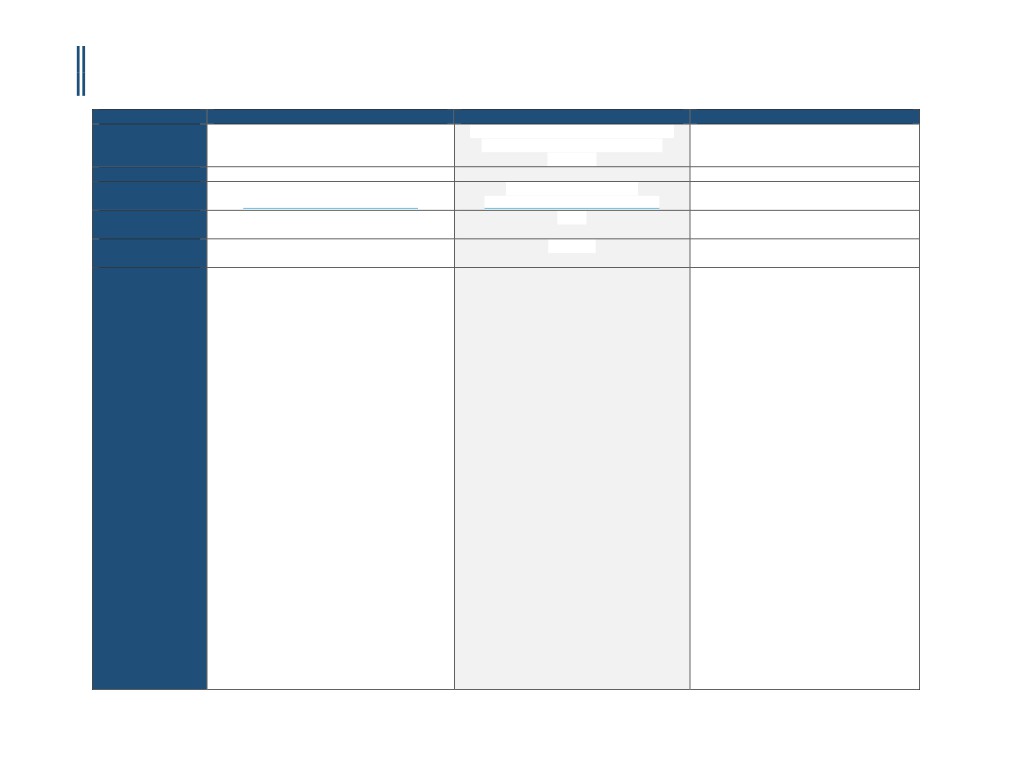
WASHINGTON - CORONARY CTA PRIOR-AUTHORIZATION INFORMATIONAL GUIDE
Updated October 19th, 2016
Payer
Premera BlueCross
Regence BlueCross BlueShield
Group Health Cooperative
Policy Name
Clinical Appropriateness Guidelines: Advanced
Contrast Enhanced Computed Tomographic
Clinical Review Criteria
Imaging
Angiography (CTA) for Coronary Artery
Chest CT Angiography (CTA)
Appropriate Use Criteria: Imaging of the Heart
Evaluation
Cardiac CT Angiography (CTA)
Policy #
46
A-0483
RBM
AIM Specialty Health® (AIM)
AIM Specialty Health® (AIM)
Unknown
Applicable CPT
75574
75574
75574
Code(s)
Applicable ICD
Not Listed
Not Listed
Not Listed
Code(s)
Covered
1.Congenital coronary artery anomalies
1.Anomalous Coronary Artery Mapping
Group Health Cooperative has not made their
a. For evaluation of suspected congenital
a. Contrast-enhanced computed
Coronary CT medical policy public.
anomalies of the coronary arteries
tomographic angiography (CTA) for
evaluation of congenital anomalous
MCG Manuals are proprietary and cannot be
2.Congestive Heart Failure/ cardiomyopathy/ left
(native) coronary arteries in symptomatic
published and/or distributed. However, on an
ventricular dysfunction
patients may be considered medically
individual member basis, Group Health can
a. For exclusion of coronary artery disease in
necessary.
share a copy of the specific criteria document
patients with left ventricular ejection
used to make a utilization management
fraction <55% in whom coronary artery
2.Evaluation of Coronary Artery Disease in the
decision. If one of your patients is being
disease has not been excluded as the
Emergency Room/Emergency Department
reviewed using these criteria, you may
etiology of the cardiomyopathy
Setting
request a copy of the criteria by calling the
a.In the emergency room/ emergency
Group Health Clinical Review staff at
3.Evaluation of patients with suspected coronary
department setting, contrast-enhanced
1-800-289-1363.
artery disease including those with prior
computed tomographic angiography
abnormal cardiac testing (MPI or stress echo)
(CTA) may be considered medically
a. Patients with abnormal MPI or stress echo
necessary for the evaluation of patients
within the preceding 60 days suspected to
with acute chest pain who are without
be false positive on the basis of low
known coronary artery disease.
Coronary Heart Disease Risk (using
standard methods of risk assessment such
as the SCORE risk calculation)
i. In the absence of a contraindication
(excluding renal impairment and
iodinated contrast agent hypersensitivity)
patients with moderate or high Coronary
Heart Disease Risk should be referred for
coronary arteriography; OR
b.Patients with equivocal MPI or stress echo
within the preceding 60 days who have low
or moderate Coronary Heart Disease Risk
1
CCM-100-108-A

WASHINGTON - CORONARY CTA PRIOR-AUTHORIZATION INFORMATIONAL GUIDE
Updated October 19th, 2016
(using standard methods of risk assessment
such as the SCORE risk calculation
i. In the absence of a contraindication
(excluding renal impairment and
iodinated contrast agent hypersensitivity)
patients with high Coronary Heart
Disease Risk should be referred for
coronary arteriography
ii. The resulting information from the CCTA
should facilitate management decisions
and not merely add a new layer of testing
c. Patients at moderate coronary heart
disease risk (using standard methods of risk
assessment, such as the SCORE risk
calculation) being evaluated for non-
coronary artery cardiac surgery (including
valvular and ascending aortic surgery) to
avoid an invasive angiogram, where all the
necessary pre-operative information can be
obtained using cardiac CT
d.For evaluation of suspected congenital
anomalies of the coronary arteries
Not Covered /
Contrast-enhanced computed tomographic
Investigational and
angiography (CTA) of the coronary arteries is
Not Medically
considered investigational for all other
Necessary
indications, including but not limited to:
A. Diagnosis and screening of coronary artery
disease (CAD)
B. Diagnosis of CAD in coronary artery bypass
grafts
C. Diagnosis of CAD after percutaneous stent
placement
D. Delineation of coronary artery anatomy
prior to a cardiovascular procedure
E. Monitoring plaque density to evaluate
treatment effect
Payer Specific
•
CCTA exams are not covered by most
Note: This policy only addresses the use of
If requesting this service, please send the
Requirements
healthcare insurers as a screening study, in the
contrast-enhanced computed tomographic
following documentation to support medical
absence of signs, symptoms or known disease
angiography (CTA) in the evaluation of
necessity:
•
Selection of the optimal diagnostic work-up
coronary arteries and does not address the
for cardiac evaluation should be made within
use of CTA for evaluation of cardiac
2
CCM-100-108-A

WASHINGTON - CORONARY CTA PRIOR-AUTHORIZATION INFORMATIONAL GUIDE
Updated October 19th, 2016
the context of other available studies (which
structure and function (e.g. cardiac masses,
• Last 6 months of clinical notes from
include treadmill stress test, stress myocardial
emergent evaluations of aortic dissection,
requesting provider &/or specialist
perfusion imaging, stress echocardiography,
suspected pulmonary embolism, and
(cardiology)
cardiac MRI, cardiac PET imaging and invasive
structural morphology).
cardiac/coronary angiography), so that the
resulting information facilitates patient
management decisions and does not merely
add a new layer of testing
Effective Date
3/1/2016
6/1/2015
7/28/2016
Last Review/
8/27/2015
4/2015
7/28/2016
Original Policy Date
3/30/2005
4/27/2006
SUGGESTED DOCUMENTATION TO NAVIGATE PRE-AUTHORIZATION
For instances when the indication is medically necessary, clinical evidence is required to determine medical necessity. For instances when the indication is investigational, you
may submit additional information to the Prior Authorization Department. The following documentation is recommended in order to ensure that pre-authorization can be
secured in a timely and efficient manner:
1.
Medical chart notes - all notes from the patient chart related to the requested procedure, including patient’s current cardiac status/ symptoms, cardiac
factors, and indications.
2.
Relevant patient information, including:
▪ Patient age, height, weight, and BMI
▪ Family history of heart problems (including relationship to member, age at diagnosis, type of event, etc.)
▪ Medical history (e.g. diabetes, hypertension, stroke arrhythmia, etc.)
▪ Cardiac risk factors
▪ Previous cardiac treatments, surgeries, or interventions
▪ Problems with exercise capacity
▪ Ordering provider information
▪ Imaging provider information
▪ Imaging exam(s) being requested (body part, right, left, or bilateral)
▪ Patient diagnosis (suspected or confirmed)
3.
Diagnostic or imaging reports from previous tests (exercise stress test, echocardiography, stress echocardiography, MPI, coronary angiography, etc.)
4.
Symptom history (onset, course, new or changing symptoms) related to all pertinent cardiac conditions, such as heart muscle/ valvular disease, structural
abnormality, infection, exposure to toxins/ chemotherapy, etc.
5.
Examination results, including evaluation of hypertension, heart failure, cardiomyopathy, abnormal rhythm, pulmonary embolus, congenital condition, etc.
6.
Any other documentation that supports the need for the procedure
DISCLAIMER: The information provided in this document is general information only and is not provided as legal advice, nor is it advice about how to code, complete, or submit any particular claim for
payment for health care services or goods. This information provides only an overview of HeartFlow’s understanding of current coverage policies for a select number of payers, and may not provide
all the information necessary to understand a particular patient’s benefits or payers coverage policies and prior authorization requirements. The information provided may not be comprehensive or
complete. It is the responsibility of the health care provider, such as a hospital or a physician to verify coverage and prior authorization requirements, submit complete, accurate and appropriate bills
3
CCM-100-108-A

WASHINGTON - CORONARY CTA PRIOR-AUTHORIZATION INFORMATIONAL GUIDE
Updated October 19th, 2016
or claims for payment that comply with applicable laws and regulations and third-party payer requirements, and to determine the appropriate codes, charges, and modifiers that the provider uses for
those purposes. Third-party payers may have policies and coding requirements that differ from those described here, and such policies can change over time.
HeartFlow disclaims any responsibility for claims submitted by health care physicians or others. Physicians should check and verify current policies and requirements with the payer for each patient.
HeartFlow endorses the best practice that all coding and billing submissions to payers be truthful and not misleading, and that providers make full disclosures to the payer about how the service has
been used. HeartFlow cannot guarantee success in obtaining payment for products and services.
Current Procedural Terminology (CPT) copyright 2016.
All rights reserved. CPT® is a registered trademark of the American Medical Association (AMA). Fee schedules, relative value units, conversion factors and/or related components are not assigned by
the AMA, are not part of CPT coding, and the AMA is not recommending their use.
The International Classification of Diseases, Tenth Revision, Clinical Modification (ICD-10) is maintained by the National Center for Health Statistics and the Centers for Medicare and Medicaid
Services.
References:
1.
“Cardiac Checklist (Health Plan).” RadMD, http://www1.radmd.com/media/459739/template-cardiac-checklist-magellan-hc-logo-4-1-2016.pdf. Accessed 25 October 2016.
2.
“AIM Specialty Health (AIM) Ordering Physician/Provider Quick Tips for Diagnostic Imaging Management Programs.” Anthem,
https://www11.anthem.com/provider/nh/f5/s2/t0/pw_ad087257.pdf. Accessed 25 October 2016.
4
CCM-100-108-A